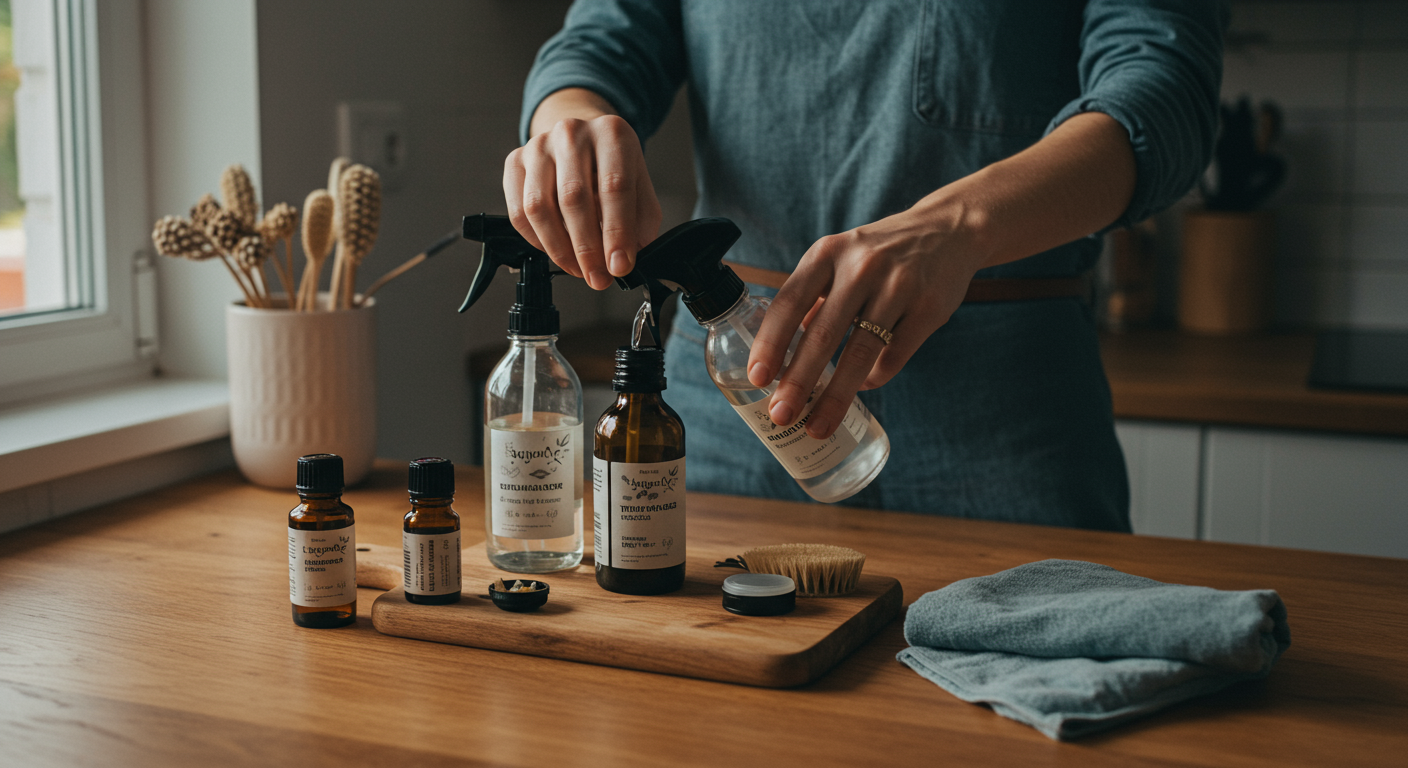Are you ready to transform your home into a sanctuary of cleanliness and sustainability? Commercial cleaning products often contain harsh chemicals that can be harmful to your health and the environment. But there's a better way! Embracing eco-friendly cleaning is not just a trend; it's a commitment to a healthier home and a greener planet. This guide is your starting point for creating effective, budget-friendly, and non-toxic cleaning solutions using simple DIY recipes.

Why Embracing Eco-Friendly Cleaning Matters for a Greener Life
Traditional cleaning products can expose you and your family to harmful chemicals, such as phthalates, ammonia, and chlorine. These chemicals can trigger allergies, asthma, and other health issues. Environmentally, these products contribute to water pollution and can harm wildlife. By switching to DIY eco-friendly cleaning, you're reducing your exposure to toxins, minimizing your environmental impact, and often saving money.
Essential Steps to Get Started
Starting your journey towards a green home is easier than you think! Begin by gathering basic supplies, which you likely already have. Baking soda, white vinegar, essential oils, and castile soap are your new best friends. Reusable spray bottles and microfiber cloths will become your cleaning companions, replacing disposable paper towels and plastic bottles. Start small by swapping out one or two cleaning products at a time. This gradual approach makes the transition manageable and sustainable.
Common Beginner Questions Answered
- Are DIY cleaners as effective as commercial cleaners? Absolutely! Many DIY recipes are just as effective, if not more so, than commercial products. Vinegar and baking soda are excellent at removing grease, grime, and odors.
- Are DIY cleaners safe for all surfaces? Always test your cleaner on a small, inconspicuous area first. Vinegar can damage some surfaces like granite and marble, so avoid using it on those. Castile soap is generally safe for most surfaces.
- How long do DIY cleaners last? Most DIY cleaners have a shelf life of a few weeks to a few months. Store them in a cool, dark place.
Tips for Success (e.g., easy swaps, habit formation)
- Start with the basics: Begin with an all-purpose cleaner and a glass cleaner. These two recipes will cover the majority of your cleaning needs.
- Keep it simple: Don't feel pressured to make every cleaner at once. Start with a few recipes and gradually expand your repertoire.
- Embrace the power of essential oils: Add essential oils like tea tree, lavender, or lemon for their antibacterial properties and pleasant scents. Plus, they add a layer of aromatherapy to your cleaning routine.
- Label everything: Clearly label your homemade cleaners with the ingredients and date made. This is especially important for safety.
- Get the kids involved: Make it a family activity!
Understanding Your Impact
By switching to DIY eco-friendly cleaning, you're making a real difference. You're reducing your exposure to harmful chemicals, minimizing plastic waste, and supporting a healthier environment. The simple act of making your own cleaners can significantly decrease your carbon footprint and promote a more sustainable lifestyle.
Finding Eco-Friendly Alternatives
While DIY is a great approach, sometimes you may need or want to buy some cleaning products. Look for brands that prioritize eco-friendly ingredients, sustainable packaging, and ethical sourcing. Consider buying products in bulk or concentrate to reduce packaging waste.
Quick & Easy Sustainable Swaps
- Reusable Spray Bottles: Instead of buying new plastic bottles every time, invest in reusable spray bottles. These are durable and can be refilled with your DIY cleaners.
- Microfiber Cloths: These cloths are a game-changer. They're effective at cleaning and can be washed and reused, replacing disposable paper towels.
- Castile Soap: This versatile soap can be used for everything from cleaning your dishes to your bathroom. Dr. Bronner's is a popular brand.
- Baking Soda and Vinegar: These two ingredients are the powerhouses of the DIY cleaning world. Baking soda is a gentle abrasive and deodorizer, while vinegar is a natural disinfectant and degreaser.
- Essential Oils: Add a few drops of essential oil to your cleaners for a fresh scent and added cleaning power.
Next Steps in Your Green Journey
Now that you've taken the first steps towards a toxin-free home, consider exploring other areas of sustainable living. Reduce your plastic consumption, conserve water, and make conscious choices about your food and transportation. Every small change adds up to a big impact!